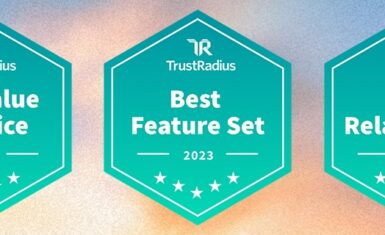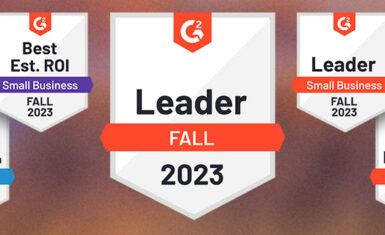I was heartened by the great response I received to a recent post introducing the idea of Work3. In case you missed it, Work3 is what we’re calling the future of work. It’s more than a new chapter; it’s a new playbook. It breaks through taboos and entirely reimagines what knowledge work looks like and feels like.
In Work3, we’re leaning fully into a remote and hybrid work landscape where people have the freedom to work where, when, and how they want, in a way that allows them to be at their best.
In my first piece on Work3, and the one written by my colleague, there has been a strong focus on the bottom-up, employee-first elements of this new paradigm. The more I think about Work3, the more I realize it is so fundamentally about leadership. And it is a new style of inspiring, motivating, and holding your teams accountable that no doubt will make many leaders very uncomfortable.
Leaders have the power to make Work3 a reality. And leaders can sabotage Work3 before it ever gets off the ground.
Crisis for leaders
Ultimately, this new way of working can bring about an identity crisis for leaders, especially for those of us who have spent years or decades immersed in Work 1.0. In Work 1.0, perception of performance was heavily influenced by presence—and not just presence, but presence within a certain timeframe at a specific location. Outcomes still mattered, of course, but we didn’t have the access data that we do now, nor did we have the genuine proof that “butts in seats” doesn’t equate to results. Knowledge workers could have told us that a long time ago, but now we’re here, and leaders need to change how they lead to meet the moment.
As leaders, we’ve been expected to lead from the front. We are just as dialed into “the way things were” as everyone else. And for many, it brings a powerful belief in the status quo and privilege that many will find hard to give up.
But what if leading from the front doesn’t mean telling everyone what to do and when to do it? What if leading from the front means taking your company and culture to a place where everyone is empowered to thrive?
For me, “the front” no longer equates to the top. Instead, it equates to the edge of innovation, and my team is right here with me.
Work better, live better
Most knowledge workers don’t need to be convinced about the merits of Work3. Many, if not most, have always wanted this. The shift to Work3 hinges on leaders getting over their fears, tackling a possible identity crisis, and embracing a new path forward.
Fear of change may be immobilizing, but leaders need to realize that’s not what Work3 is about. It’s about empowering you to reimagine everything you thought you had to do, and instead build something that works far better for everyone involved.
What is that “something”? It’s a space where people are authentic and transparent, bringing their whole selves to work. People are accountable for the quality and timeliness of their work, not how many hours they spent indebted to their employer today.
Work3 is a place where employee wellness and work/life balance aren’t propaganda campaigns, but rather integral values. It’s not simply letting someone leave early for the soccer game but creating an environment where attending the soccer game isn’t considered leaving early at all.
The “butts in seats” crowd need to realize that it’s based on a flawed assumption; that the imperfect inputs we measured don’t inherently drive a specific set of outputs. Here’s the truth: If my leadership style hinged on face time, physically watching the work get done, I might have been able to delude myself into thinking I was actually impacting the inputs.
We’re decoupling time and space from outputs. In the past, those of us who subscribed to the “butts in seats” methodology might have deluded ourselves into thinking that by watching inputs—physically monitoring presence and watching people work—we were doing our jobs. That’s like saying that you sat in the theater for a Broadway Play and thus dictated the quality of the performance. Yes, you were there, you saw them on stage the whole time, but monitoring and observation of the process have zero impact on the results.
I’d much rather have someone knock it out of the park from a cabin at midnight than go through the motions at a desk from 9-5. I know that many leaders agree with me on this one, at least in theory. And I empathize with the fear that comes with transitioning a theoretical agreement into an entire, enterprise-wide set of best practices.
Our new job
Shifting bold theory into practice is destabilizing. When it threatens the fundamental tenets of your career, it may be terrifying. Make no mistake, I have sky-high expectations and they’re not lowering as we go into Work3. They’re raising. Why? Because I believe in what we’re doing, and I believe that untethering our work from the archaic structures of the past means we can go further, faster into the future.
This isn’t new-age optimism. I’m data-driven to my very core, and I am witnessing real, quantifiable results.
So, what’s a leader’s job in Work3? For starters, here’s what it’s not. It’s not my job to tell people how to do their jobs. It’s definitely not my job to micromanage schedules.
It’s my job to create a cohesive vision.
It’s my job to describe what a strong output looks like and let my employees use their creativity and skills to figure out the best way to get there.
It’s my job to create the space for people to do better than I would have even known to ask of them.
It’s my job to create enough guardrails that people feel free to take risks and have the psychological safety to know they’ll be celebrated for it.
It’s my job to measure outputs, not to prescribe inputs.
It’s my job to recognize and encourage diversity of thought, perspective, and background, and to embrace ideas that challenge the status quo and ideas that challenge me.
And what if we don’t embrace Work3?
Work3 might not be an imperative. At least not yet. There are plenty of organizations pivoting from a brief, pandemic-fueled stint in Work 2.0 back to Work 1.0. There are others creating Work 1.5 or what they see as a fresh-faced Work 2.5.
Business leaders can do whatever they see fit. And that’s kind of the problem. It’s easy to excuse yourself into stagnation. But odds are, your people are more than ready for Work3. And organizations that decline to move forward will find themselves with a candidate pool that’s not only smaller, but less inclined to innovate, adapt, and raise the bar.
Start by asking yourself this: when great people can work from anywhere, why would they want to work for you? Can you meet people as they are, welcoming their whole selves? Can you offer to meet their needs of true purpose, a path forward, and pay that reflects their value? Can you hire fantastic people, make them accountable for their work, and get out of their way?
Work3 is empowering and enlivening for employees and possibly uncomfortable and unmooring for leaders.
I’m not asking you to jump in with both feet right now. But I think you owe it to yourself to challenge your fears and think about what Work3 could look like in your organization.
On behalf of myself and all the leaders across our company, we’re happy to jump in first. You can always start by watching us.






